| Photojournal
- 2 October
2004
Junco
central
| The second
of October was a Saturday, and I engaged in my usual brunch at the
Golden Pia. After that, I went up the hill to SFU to shoot pictures
of the juncos that I had seen there earlier in the week.As I was
walking from parking lot B to the Applied Sciences Building, I encountered
a sparrow that I didn't know. After asking around, I found out that
he's an immature (1st winter) White-crowned Sparrow. Here are a
couple of shots of him. |
|
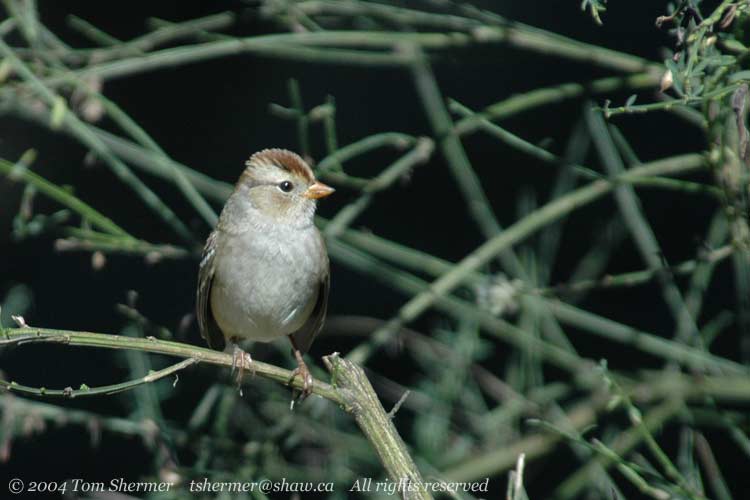 |
| |
|
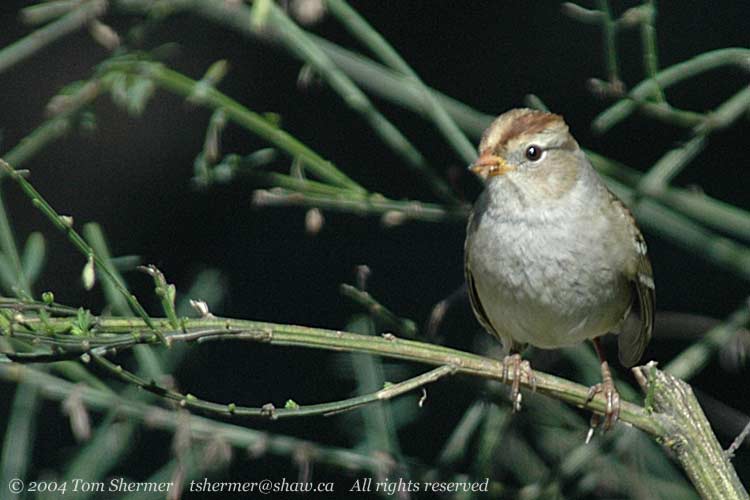 |
| I continued
on about 20 meters to the entrance to the Applied Sciences Building
(where my Burnaby-campus office is). Just outside the door, there
was a section of plowed-up earth that I guess at some point they'll
landscape or cover with sod. This plot was a hub of activity for
a bunch of Dark-eyed Juncos. Dark-eyed Juncos are the only species
of Junco that we get up here, and they are considered to be a type
of sparrow. Here's one of the black-hooded little guys, an adult
male. |
|
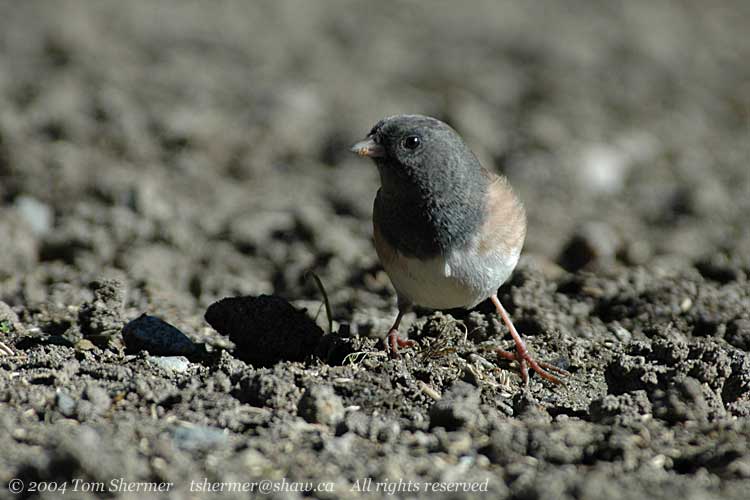 |
|
Actually, that's a
pale variant adult male. The dark variant has deeper brown on
his sides.
|
|
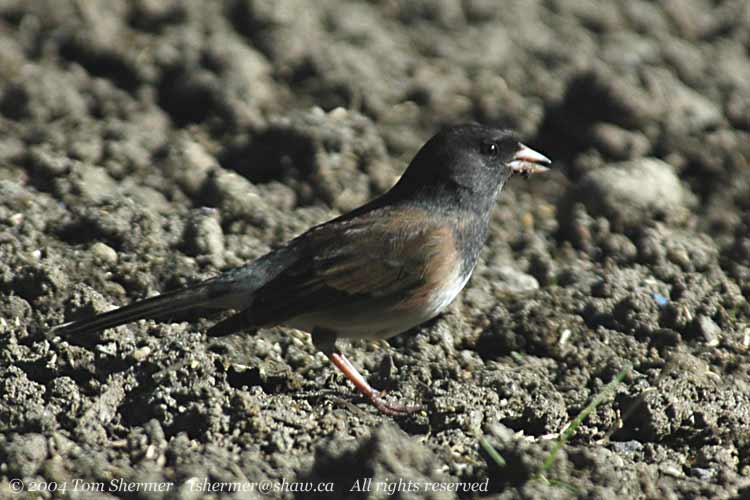 |
| The females
have a greyish hood, like this lady. |
|
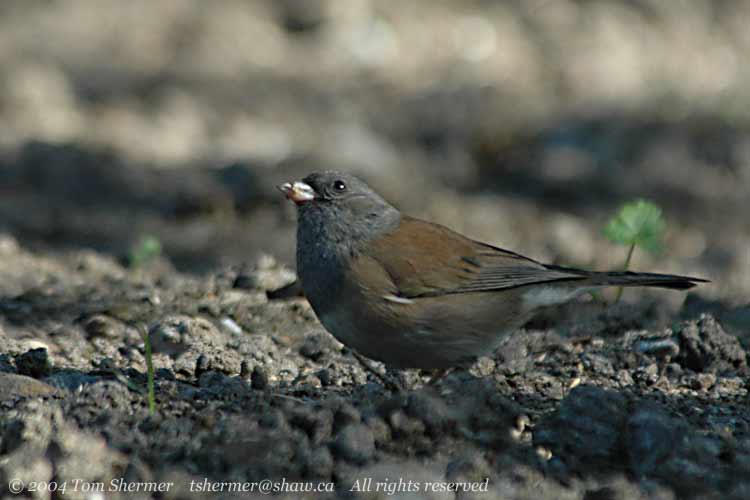 |
|
Most of the time, the
junco were keeping in the shade, and I only got a few shots of
them in the full sun. I wondered why they were staying in the
shade...was the sun too hot for them? Did they feel more camouflaged
in the shade? Were they eating particular insects that were more
likely to be found in the shade? I still don't know the answer.
There are several distinct
subspecies or races of the Dark-eyed Junco. The exact number depends
on who you ask...I have different books with at least two different
numbers. What the books agree on, though, is that there are two
major subspecies that we get in the Vancouver area: the Oregon
subspecies, which has the black hood and brown sides, like the
three above, and the Slate-colored, which is dark grey except
for a white belly. The flock I was watching was mostly Oregons,
but there were a few Slate-coloreds. Here's one, an adult male.
|
|
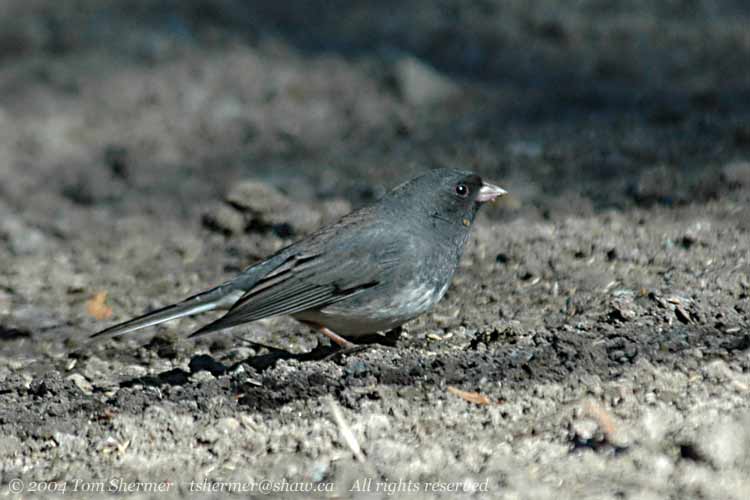 |
| While I
was sitting there taking photos of the juncos, a crow came by. The
crow was clearly a local, because, like most good denizens of most
good universities, he was eating pizza. |
|
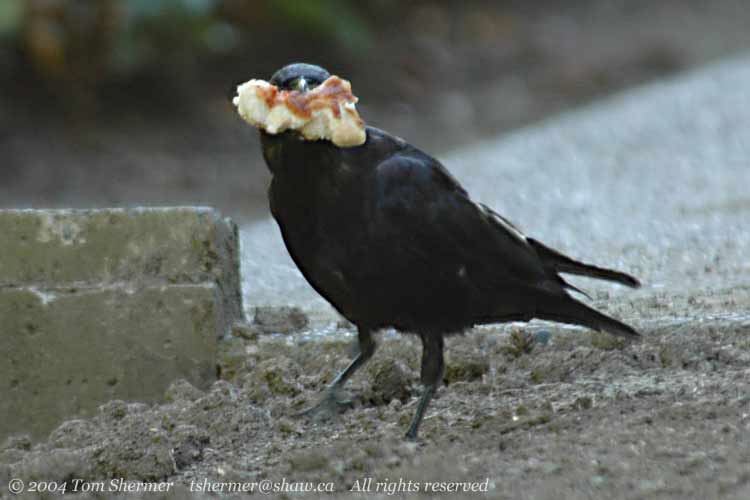 |
|
(I had to retouch that
photo a bit to remove some double-imaging due to camera shake.)
It turns out that here
on the coast of British Columbia (and somewhat in coastal Northern
Washinton) we have the Northwestern Crow, where most of the rest
of North America gets the American Crow. Our Northwestern Crows,
like the one above, are on average a little smaller and have a
hoarser call than the Americans. My favorite guide book says that
you can't really tell the two species apart in the field, except
by range. Since we're in the Northwestern Crow's range and not
the American's, this crow must be Northwestern.
After taking a few
more junco pictures, I decided to head down Burnaby Mountain to
a little park called Rummel Park. I'd never been there before,
but there had been an owl of some sort reported from there, and
I went to see if I could find it. Sadly, I found no owl, and basically
no birds other than crows. I spent about an hour there, and then
moved on.
I decided to head back
to Tsawassen, to the ferry jetty, to see if I could get some better
photos of the grebes. It seems that all of my friends from the
day before were still there. The Greater Scaup was still hanging
out near the jetty.
|
|
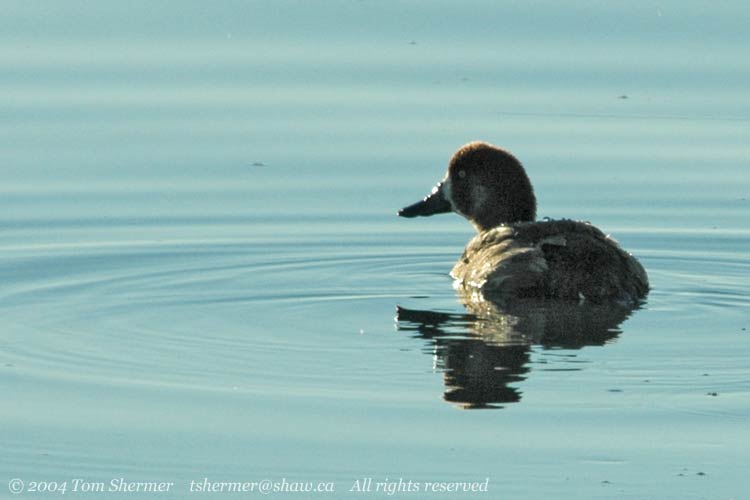 |
| And there
were a few Western Grebes around, more than the day before. |
|
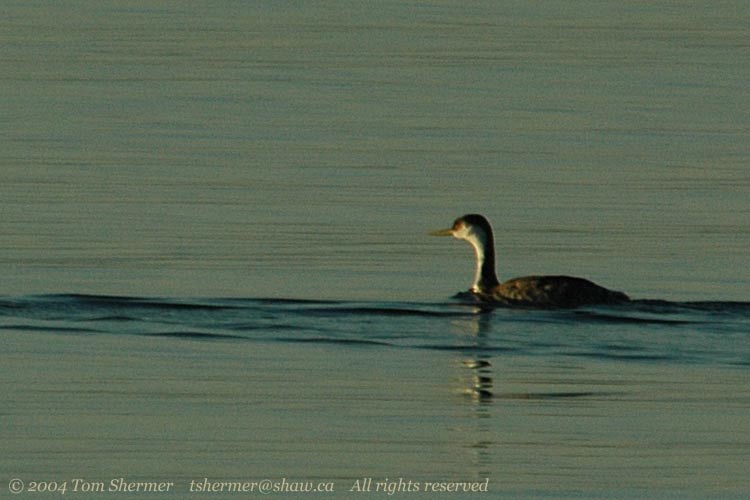 |
| |
|
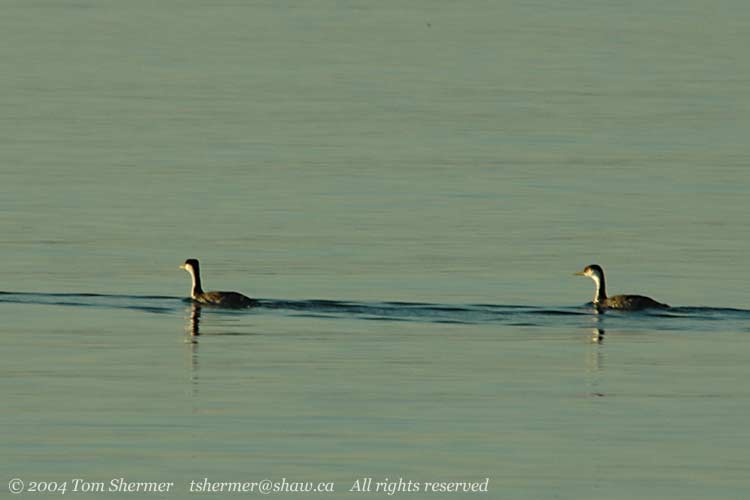 |
|
I got a few closer
shots of Horned Grebes. The amount of grey on this one's neck
and face leads me to believe it's a juvenile. The adult nonbreeding
plumage is more of a white neck and face.
|
|
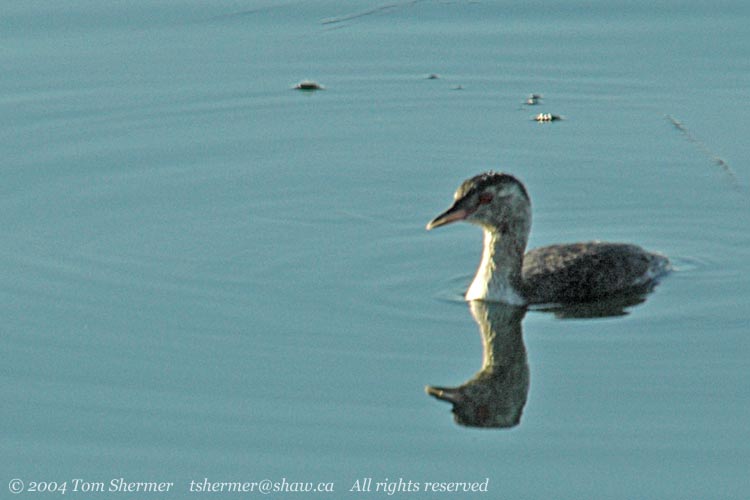 |
|
|
|
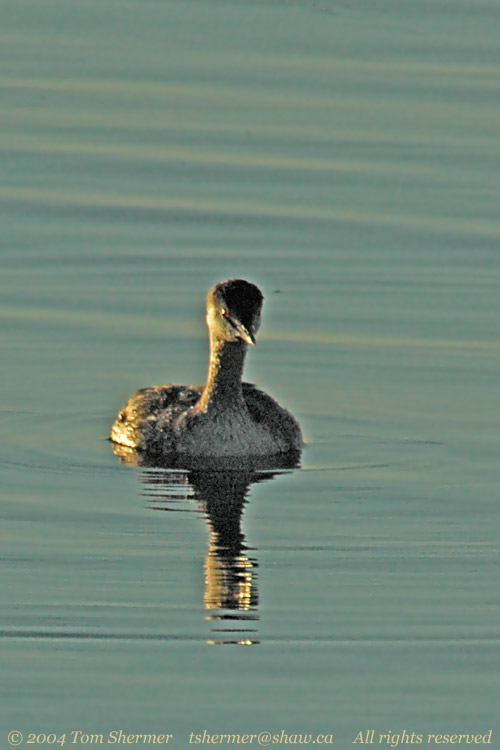 |
|
Even the Red-necked
Grebes got a little bit closer than the day before. That was awful
nice of them.
|
|
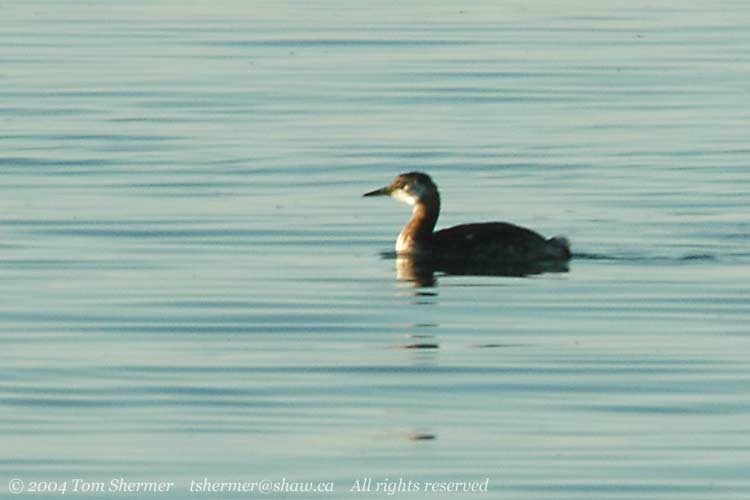 |
|
Red-necked Grebes have
a stout neck and a long, sharp bill. Westerns have a long neck
with a sharp bill, and Horneds have a very stout neck with a short
bill. They're fairly easy to tell apart in the field.
Here's another Red-necked,
a little later in the day.
|
|
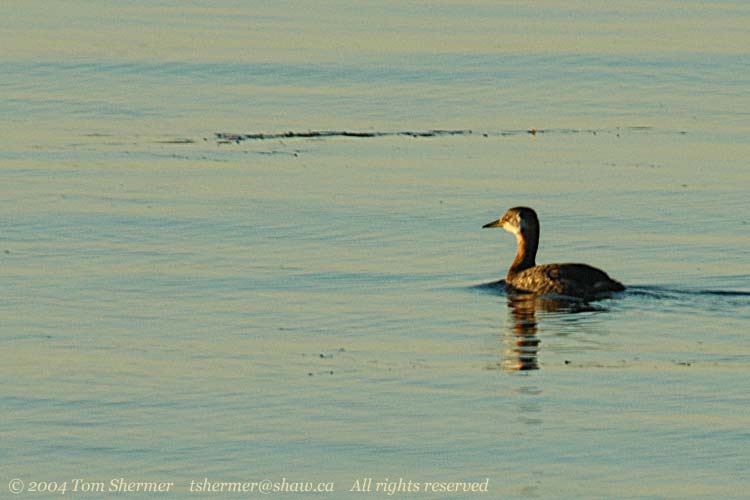 |
|
There's some country
song I've been hearing on the radio where a guy is singing something
like "...and I pray that someday I will find me a Red-necked
Grebe...give me, give me, give me a Red-necked Grebe...."
It kinda sticks in my head whenever I see these birds.
Also out on the water
were a bunch of Double-crested Cormorants. There are typically
fifty or so of them out on the far side of the compensation lagoon.
On this day, though, one or two of them were swimming a little
closer to the jetty, which afforded better photo opportunities.
|
|
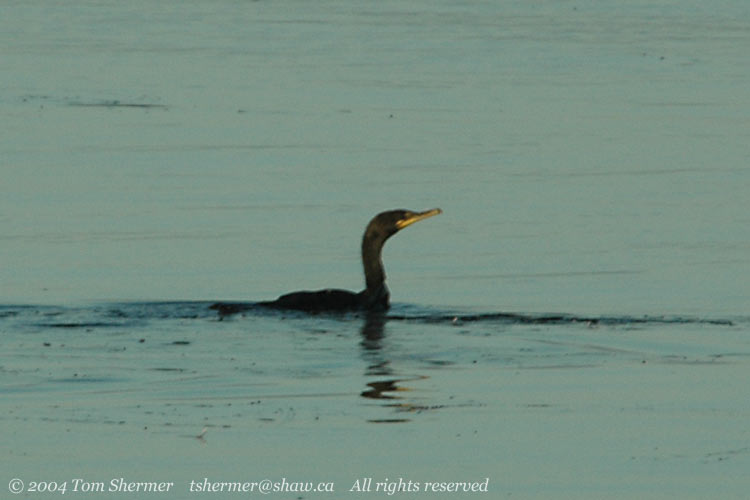 |
|
I thought about staying
for another sunset, but since I had just shot sunset from there
the day before, I headed back to New Westminster for dinner and
an early night.
Your purveyor of fine
juncos,
Tom
|
|
|